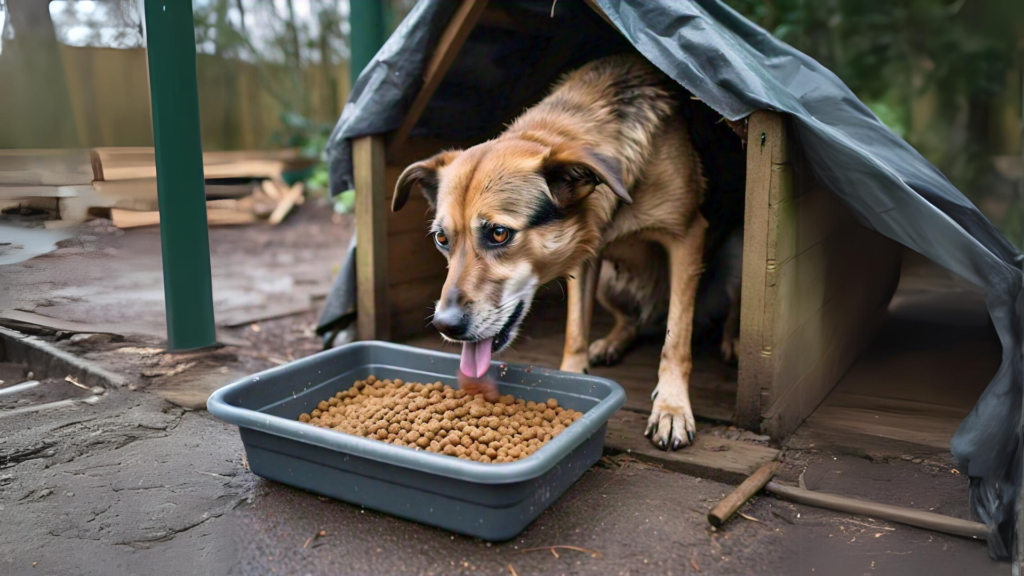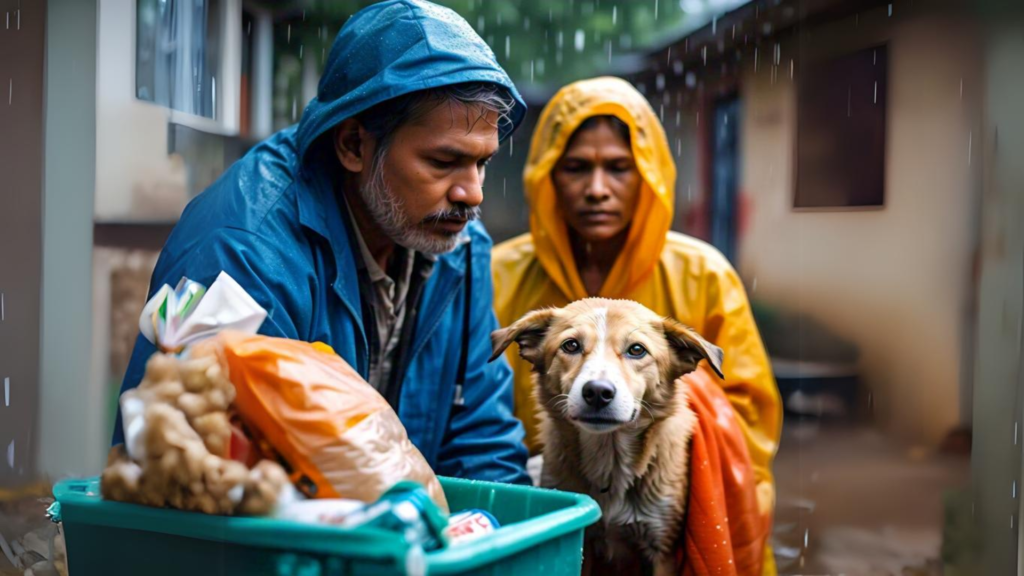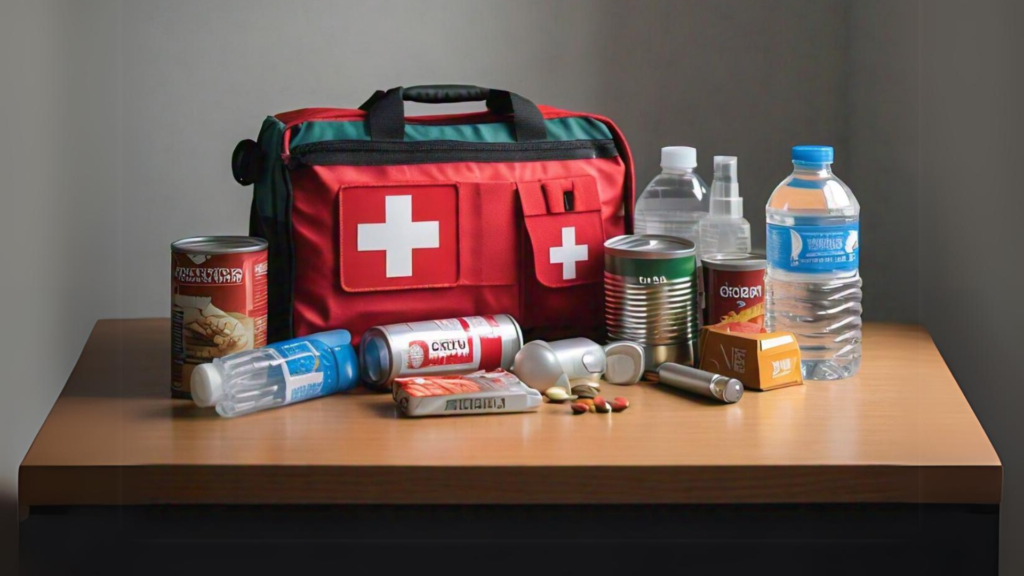How to help stray dogs in the rain? Have you ever wondered what happens to those furry friends when the skies open up and the streets are flooded? Rainy days can be harsh on stray dogs, leaving them cold, hungry, and vulnerable. As an animal lover, you have the power to make a difference. In this guide, we’ll walk you through simple yet impactful ways to provide comfort and care to stray dogs during rainy weather. From creating temporary shelters to ensuring they have access to food and clean water, your actions can transform a dreary day into a beacon of hope for these animals. Dive in and discover how you can be the hero they need!
How to Help Stray Dogs in Rain?
Helping stray dogs in rain requires practical steps and a compassionate approach. Here are some effective ways you can make a difference:
Provide Them With a Temporary Shelter
Stray dogs need shelter from the rain to stay dry and warm. You can create a simple, temporary shelter using materials like large plastic containers, crates, or old blankets. Ensure the shelter is elevated to avoid water pooling inside. Place it in a quiet, secure location away from traffic. Adding dry towels or blankets inside will keep the dog comfortable and insulated from the cold. Regularly check the shelter to make sure it remains dry and safe.
Give Them Food and Clean Water
Finding food and clean water can be difficult for stray dogs in the rain. Provide dry dog food in a weather-resistant container to keep it from getting wet. Offer fresh water daily, and use a bowl that can be easily cleaned. Avoid wet food as it can spoil quickly. Ensure that the feeding area is sheltered to prevent the food and water from being contaminated by rain. Keeping the area clean helps avoid attracting pests and ensures the dog’s health.

Deworm Them
Stray dogs are often at risk of parasitic worms, especially in damp conditions. Look for signs such as weight loss, a bloated belly, or worms in their stool. To help, use deworming tablets, which can be purchased from pet stores or vets. Follow the dosage instructions carefully, and consult a vet if you’re unsure. Deworming helps prevent further health issues and discomfort. If you spot a severely ill dog, seek professional advice to ensure it gets the proper care.
Take Injured or Sick Dogs to the Hospital
In rainy weather, injuries and illnesses can become more severe for stray dogs. If you encounter a dog that appears hurt or unwell, it’s crucial to get them to a vet or animal hospital as soon as possible. Look for signs such as limping, bleeding, or severe coughing. Many vets offer emergency services or reduced fees for strays. Proper medical treatment can make a significant difference in their recovery and quality of life.
Reach Out to Vets and NGOs
You can make a bigger impact by connecting with local veterinarians and animal NGOs. Many vets offer services for stray animals, including free or discounted treatments. NGOs often have resources, such as food supplies and medical care, that can be shared with the community. Reach out to these organizations for guidance, and support, and to explore volunteer opportunities. They can also provide advice on best practices for caring for stray dogs in rainy conditions and may offer programs to help with shelter and medical needs.
Creating a Community Support Network
Building a community support network can amplify your efforts to help stray dogs. Organize neighborhood drives to collect supplies like food, blankets, and medicines. Use social media to spread awareness and encourage others to participate. Form or join local groups focused on animal welfare to share resources and ideas. A strong community network not only improves immediate aid but also fosters long-term support for stray animals, creating a collective impact that benefits both the animals and the community.

Educating Children
Involving children in helping stray dogs can teach empathy and responsibility. Start by explaining the needs of stray animals and how they can contribute, such as by making simple shelters or organizing small fundraisers. Encourage schools to include animal welfare in their curriculum or host educational events. Hands-on activities like creating pet toys or gathering supplies for donation can make the learning process engaging and impactful. Educating children helps build a compassionate future generation that values and cares for animals.
Long-Term Solutions
To address the root causes of stray dog issues, consider long-term solutions like spaying and neutering programs. These programs help control the stray population by preventing unwanted litter. Support local shelters and advocacy groups that promote these initiatives. Encourage community involvement in adoption drives and foster programs to give stray dogs permanent homes. Long-term solutions not only improve the lives of individual dogs but also help prevent the cycle of stray populations from growing.
Emergency Preparedness
Prepare for emergencies to ensure stray dogs are safe during severe weather events. Create an emergency kit with essentials like first aid supplies, extra food, and water. Set up a plan for quickly moving animals to safety if needed. Educate yourself and others on recognizing signs of distress in dogs and how to respond effectively. Having a well-thought-out emergency plan ensures that stray dogs are protected and cared for even in unexpected situations.

Conclusion
Knowing how to help stray dogs in rain is a compassionate and impactful way to make a difference. By providing temporary shelters, ensuring they have food and clean water, and addressing health issues like worms, you can offer crucial support during harsh weather. Additionally, reaching out to vets and NGOs, building a community network, and educating children can further enhance your efforts. Long-term solutions, such as spaying and neutering, along with emergency preparedness, ensure that stray dogs receive continuous care and protection. Your actions can turn a rainy day into a beacon of hope for these vulnerable animals. Together, we can be heroes for stray dogs, offering them comfort and care when they need it most.